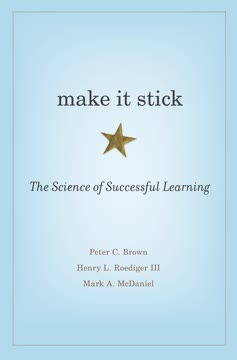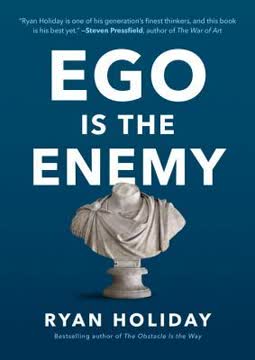Key Takeaways
1. Reading is More Than Decoding: It's an Art
Reading is an art that we need to perfect to make the most of our development, and learn about the world and everything in it.
Beyond Literacy. Reading transcends the simple ability to recognize words. It's a skill that requires cultivation and practice to unlock its full potential. True reading involves comprehension, critical thinking, and the ability to connect ideas. It's about engaging with the text on a deeper level, not just passively absorbing information.
The Digital Age Challenge. In an era dominated by quick information and digital distractions, the art of reading is more important than ever. The internet provides access to vast amounts of data, but it doesn't necessarily foster understanding or critical thinking. Reading books, on the other hand, encourages contemplation and deeper engagement with ideas.
Reading as Mental Exercise. Reading is an exercise for the mind, strengthening cognitive functions and expanding our horizons. It allows us to learn, evolve, and develop a more nuanced understanding of the world. By perfecting the art of reading, we can unlock our intellectual potential and make the most of our learning experiences.
2. Active Reading: Engage, Question, Understand
You can only find an answer in what you’re reading if you are, in the first place, asking a question.
Passive vs. Active. Passive reading involves skimming through text without a specific purpose or critical engagement. Active reading, conversely, entails approaching the text with questions, questioning the author, and actively engaging with the ideas presented. It's about having a conversation with the text, not just passively receiving information.
Metacognitive Strategies. Active reading can be enhanced by employing metacognitive strategies, such as connecting background knowledge to the text, drawing conclusions, summarizing, and determining the importance of the text. These strategies help readers move beyond simply deciphering words to becoming critical thinkers and engaging their thoughts with what is being read.
Features of Active Reading:
- Reading with questions in mind
- Questioning the author's assumptions
- Being intellectually engaged with the material
- Engaging in critical thinking
- Drawing conclusions based on the text
By adopting these strategies, readers can transform their reading experience from a passive activity to an active and engaging process of discovery and understanding.
3. Read for Understanding, Not Just Information
To understand better what we read, we want to focus on the third goal of reading, and that is to read for understanding.
Information vs. Understanding. There's a crucial distinction between reading for information and reading for understanding. Reading for information involves simply absorbing facts and data, while reading for understanding requires deeper engagement with the text, critical thinking, and the ability to connect ideas.
Conditions for Understanding. Reading for understanding is most effective when two conditions are met:
- There is an initial inequality in understanding between the reader and the writer.
- The reader aims to overcome this inequality through reading.
Critical Reading Questions. To read for understanding, it's essential to ask critical questions, such as:
- Why am I reading this?
- What is the author trying to do?
- What is the author saying that relates to what I want to learn?
- How much did the author convince me?
- What use can I make of this?
By focusing on understanding, we can move beyond simply accumulating information to developing a deeper and more meaningful connection with the text.
4. Books as Teachers: Learn by Discovery
When you are enlightened about something, you can explain it.
Instruction vs. Discovery. There are two primary types of learning: instruction and discovery. Instruction involves being told information by a teacher or authority figure, while discovery involves learning through exploration, investigation, and reflection. Learning by discovery fosters deeper understanding and critical thinking skills.
Active Learning. Active learning involves engaging all of our mental faculties, including our senses, imagination, and intellect. It's about observing, remembering, constructing abstract notions, and thinking critically. Active reading is analogous to active learning, requiring us to go beyond the literal meaning of the text and develop insight and understanding.
Levels of Comprehension. To learn actively through reading, we need to achieve three levels of comprehension:
- Literal: Understanding the explicit meaning of the text
- Interpretive: Reading between the lines and understanding implied meanings
- Applied: Applying the ideas from the text to our own knowledge and experiences
By treating books as teachers and engaging in active learning, we can unlock a deeper level of understanding and develop critical thinking skills that will serve us well in all aspects of life.
5. Level Up Your Reading: Four Stages to Mastery
This level of reading is “the art of skimming systematically”.
Four Levels of Reading. There are four distinct levels of reading, each building upon the previous one:
- Elementary Reading: Basic literacy and decoding skills
- Inspectional Reading: Skimming and superficial reading to assess the value of a book
- Analytical Reading: Thorough and complete reading for deep understanding
- Syntopical Reading: Comparative reading of multiple books on a single topic
Inspectional Reading. Inspectional reading involves systematically skimming a book to get a sense of its content and structure. This includes examining the title page, preface, table of contents, index, and publisher's blurb. It also involves reading the most important chapters and skimming through the rest of the book.
Analytical Reading. Analytical reading is the most sophisticated level of reading, requiring a thorough and complete engagement with the text. It involves asking questions, identifying key terms, understanding the author's arguments, and critically evaluating the book's content.
Syntopical Reading. Syntopical reading involves reading multiple books on a single topic and synthesizing the information to develop a comprehensive understanding. It requires identifying relevant passages, bringing the authors to terms, clarifying the issues, and analyzing the discussion.
By progressing through these four levels of reading, we can develop our skills and unlock a deeper level of understanding and engagement with the written word.
6. Own What You Read: Interpret and Connect
Interpreting a book or any text is making it your own.
Beyond the Author's Intent. Literary interpretation is not about trying to decipher the author's intentions, but about creating meaning from the text. It's about adding our own views, experiences, and perspectives to the written word.
Social Circumstances. A text's meaning depends on the social circumstances of when it is created and interpreted, as well as what readers add to it. Different readers from different social groups will bring their own unique perspectives to the text, resulting in a variety of interpretations.
Questions for Interpretation. To interpret a text effectively, it's helpful to ask questions about:
- The text itself
- The context in which it was produced
- The speakers and their perspectives
- The language used
- The symbols and their meanings
- The representation of social themes
- Your own personal experience
By engaging in literary interpretation, we can make the books we read our own and connect them to our lives and the world around us.
7. Boost Memory: Retain What You Learn
What is immediately rewarded is repeated. What is immediately punished is avoided.
Memory Consolidation. To retain information from reading, it's essential to transfer it from working memory to long-term memory through a process called consolidation. This can be achieved by learning the information in a context that we comprehend or if it is emotionally significant for us.
Learning Styles. Identifying our preferred cognitive learning style can enhance memory consolidation. There are three primary learning styles:
- Visual: Learning through seeing and visualizing information
- Auditory: Learning through listening and discussing information
- Kinesthetic: Learning through hands-on activities and physical movement
Retention Techniques. Several techniques can be used to improve information retention, including:
- Taking notes and creating outlines
- Reiterating the information in our own words
- Creating mind maps to visually organize ideas
By understanding how our memories function and employing effective retention techniques, we can make the most of our reading experiences and retain the knowledge we gain.
8. Words Matter: Build Your Vocabulary
Words are things, and a small drop of ink, Falling like dew, upon a thought, produces That which makes thousands, perhaps millions, think.
Vocabulary as Foundation. A strong vocabulary is essential for effective communication, comprehension, and critical thinking. Building our reading vocabulary is a continuous process that enhances our ability to understand complex texts and express ourselves eloquently.
Knowledge of Words. The knowledge of words encompasses more than just their definitions. It includes:
- Phonology: How a word sounds and is pronounced
- Morphology: The word's structure and parts
- Grammar: The word's class, form, and function
- Semantics: The word's meaning in different contexts
- Syntax: How words are arranged in sentences
Learning Approaches. There are two primary approaches to vocabulary learning:
- Direct Learning: Being told what a word means
- Indirect Learning: Deriving the meaning of a word from context
Contextual Clues. To deduce meaning from context, we can:
- Identify the word's morphology
- Examine the immediate context
- Consider the wider context
- Guess the word's meaning
- Verify our guess with a dictionary
By actively building our vocabulary and understanding the nuances of language, we can unlock a deeper level of comprehension and communication.
9. Tailor Your Approach: Different Techniques for Different Texts
Every book contains parts that we can skim through and other parts that need thorough reading.
One Size Doesn't Fit All. Different types of books require different reading techniques. What works for a novel may not work for a scientific textbook. It's essential to tailor our approach to the specific type of text we're reading.
Expository Books. Expository books aim to inform and explain. They can be either practical (offering rules and guidelines) or theoretical (laying out principles and concepts). When reading expository books, it's important to identify the main topic, objectives, and arguments.
Fiction Books. Fiction books tell stories and create new worlds. When reading fiction, it's important to immerse ourselves in the story, understand the characters, and analyze the plot.
History Books. History books recount real events. When reading history, it's important to assess the author's sources, identify biases, and consider different viewpoints.
Scientific Books. Scientific books present research and theories. When reading scientific books, it's important to understand the scientific method, evaluate the evidence, and consider the limitations of the research.
By understanding the characteristics of different types of texts and tailoring our reading techniques accordingly, we can maximize our comprehension and engagement.
Last updated:
Review Summary
The Intelligent Reader's Guide To Reading receives mostly positive reviews, with readers praising its comprehensive strategies for improving reading skills. Many appreciate the book's focus on different reading styles and retention techniques, setting it apart from speed-reading guides. Some reviewers compare it favorably to other reading guides, while others find it slightly overwritten. Overall, readers find the book helpful in enhancing their reading experience and recommend it for those looking to improve their reading skills.
Similar Books










Download PDF
Download EPUB
.epub digital book format is ideal for reading ebooks on phones, tablets, and e-readers.





